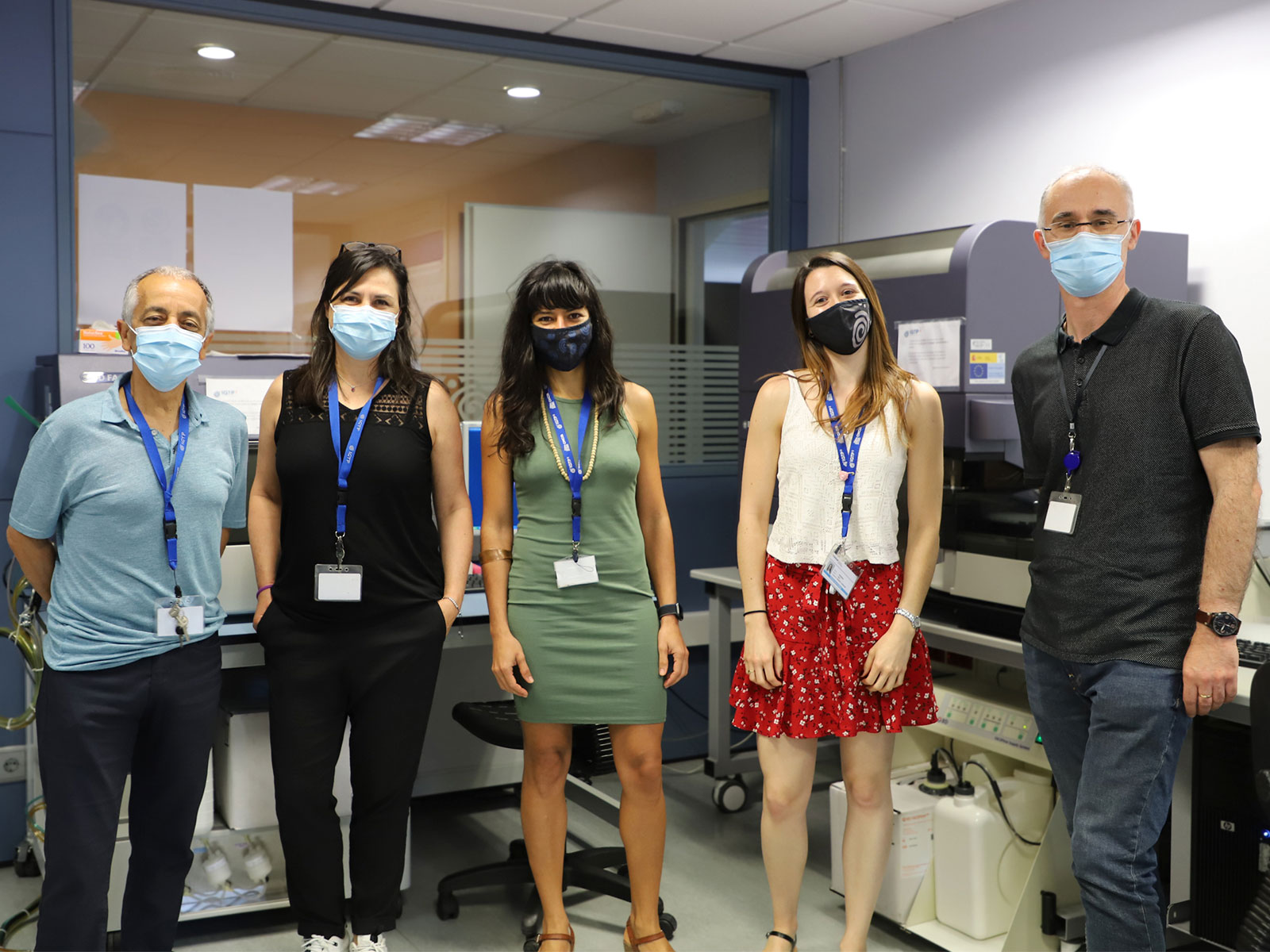Multiparameter Flow cytometry shines a light on interactions between human spleen cells and extracellular vesicles from Plasmodium vivax patients

The Plasmodium vivax and Exosome Research Group (PVREX) has worked closely with the Cytometry Core Facility of the IGTP to use multiparameter cytometry combined with cell purification techniques to study the complex cell populations in the human spleen. The study published in Frontiers in Cellular and Infection Microbiology also looked at the interactions extracellular vesicles taken from plasma from patients with Plasmodium vivax infections, a parasite which causes malaria, and the different types of spleen cells. This is the first time this type of study has been done using spleen samples from donors.
The spleen has multiple caretaking functions involving removal of aging red blood cells, cycling of iron and coordinating the immune response to parasites in the blood, including the parasites that cause malaria such as Plasmodium vivax. This parasite has been studied in depth by the Plasmodium vivax and Exosome Research group (PVREX), led by Carmen Fernández-Becerra and Hernando del Portillo (ICREA) of the IGTP and ISGlobal, including aspects of how it interacts with spleen cells. This research, published in Frontiers in Cellular and Infection Microbiology provides a new methodology for studying human spleen cells and their interactions with extracellular vesicles (EVs), tiny nanoparticles secreted by living cells involved in intercellular communication. In this case the EVs were from the blood of patients infected with P. vivax. "We have exploited flow cytometry techniques, working closely with the Cytometry Facility at the IGTP," says Melisa Gualdrón-López, joint corresponding author with del Portillo, "we have identified and quantified the main players for the first time and this paves the way to study how they are interacting."
The complexity of the structure of the spleen and the difficulty of obtaining biopsy samples means there are gaps in understanding of its functions. Studies have been carried out using mice, but there are important differences from humans. In this case, the team have collaborated with Dr. Ricardo Lauzurica from the Nephrology Service of the Germans Trias i Pujol University Hospital to obtain spleen samples from organ transplantation donors. In parallel, blood plasma samples were collected from patients infected with P. vivax at the Doutor Hector Viera Dourado Tropical Medicine Foundation in Manaus, Brazil.
The team has worked out a complex and painstaking methodology to obtain both the different spleen cell populations and the extracellular vesicles from infected and healthy blood. The sections of spleen were broken up mechanically and put through an exhaustive series of filtration stages, but without destroying the surface markers that are needed to identify the wide range of immune cells present. EVs were extracted and labelled so their interactions with the different spleen cells could be tracked in further experiments.
"This study was performed by carrying out extensive work involving multiple separation processes, followed by an exhaustive review of the different cell types using our powerful flow cytometry platform at each step to ensure the best validation of the strategy used. This means we now have a robust methodology to use in future studies," underlines Marco Antonio Fernández Sanmartin, Head of the Flow Cytometry Core Facility at the IGTP.
"We have accurately identified the cell types in the spleen," explains Gualdrón-López; and we have seen that extracellular vesicles derived from P. vivax patients interact with certain immune cells in a different way from EVs from healthy people. We also found a type of cell in which P. vivax are normally found, previously it was thought that this type of cell was limited to bone marrow. We already know that the parasite does interact within the spleen, so this is another clue to the biology of this extremely complex human parasite."
This work has been possible due to funding from the Government of Catalonia and Spanish Government. It has also received funding from the Fundación Ramon Areces and the Network of Excellency in Research and Innovation on Exosomes (REDiEX).
Original Research Article
Front. Cell. Infect. Microbiol., 01 March 2021 ' https://doi.org/10.3389/fcimb.2021.596104
Gualdrón-López et al.

